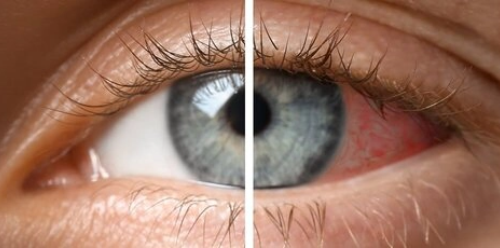Diabetic Retinopathy
ProtoKinetix could hold the key to protecting and healing retinas
In addition to other complications, diabetes can adversely affect the eyes by causing diabetic retinopathy, or damage and deterioration of the blood vessels in the retina. In fact, diabetic retinopathy is the number one cause of blindness in young adults, according to the American Academy of Family Physicians. And 1 in 3 diabetics over 40 will experience retinopathy to some degree. This could be as many as 120 million people, though many more are undiagnosed. Sadly, more than 800,000 people have gone blind due to diabetic retinopathy.
AAGP® could play an important part in addressing the devastating side effects of this disease and healing the eye from diabetic retinopathy, thanks to its protective potential to heal the cells of the retina.

Diabetic retinopathy causes
According to the American Academy of Ophthalmology, the high blood sugar caused by diabetes can harm the small blood vessels of the eye, causing blockages specifically affecting the retina. Sometimes, the body tries to build new blood vessels, but these, too, are weak or damaged by the hostile effects of diabetes. The result is blurry vision and sometimes even blindness.
There are two stages of diabetic retinopathy: early, Non-Proliferative Diabetic Retinopathy (NPDR), and the serious and more advanced stage, called Proliferative Diabetic Retinopathy (PDR).
During the early stage, small leaks in the blood vessels can cause swelling (macular edema) and blockages (macular ischemia). As the disease progresses to the advanced stage, blood may leak from malformed blood vessels into the vitreous material of the eye, sometimes causing scar tissue, dark spots in vision, or even a detached retina.
Diabetic retinopathy symptoms
In the early stages of diabetic retinopathy, the patient may not notice many changes in vision. Left undiagnosed and untreated, it can lead to blindness. Symptoms of diabetic retinopathy include:
- Dark, floating spots in your vision
- Blurry vision, including vision that goes from blurry to clear
- Poor night vision
- Loss of vision
- Impairment of your ability to see color
According to the Mayo Clinic, diabetic retinopathy will usually affect both of the patient’s eyes.
Treatments for diabetic retinopathy
There is no cure for diabetes, only management. For people with diabetes, careful monitoring of vision is important, and should include regular eye exams with dilation. Disciplined regulation of blood sugar and blood pressure is also critically important to prevent severe vision loss. Preventative medicine strategies could also be an option if they can be developed to protect the small blood vessels and cells of the retina.
There are some laser treatments and surgeries that show benefits to addressing the blood vessels of the retina, but the lack of affordability of these treatments leaves an opening for other innovations to grab market share.

AAGP® as a potential solution
But just because there is no cure yet for diabetes yet does not mean that people must resign themselves to deteriorating vision. At ProtoKinetix, we believe AAGP® holds an important key to defending against vision loss and the potential to improve quality of life to people suffering from diabetic retinopathy. That’s because our proprietary glycopeptide holds the promise of aiding the blood vessels and cells of the retina, which could stop or even reverse the leaks and blockages of this disease if a path forward is established in the normal care strategy.
ProtoKinetix research and clinical trials
See the promising results our research has yielded so far, which indicates the ways AAGP® could be used to enable regeneration of retinal cells. You can review our research pipeline to see the status of our active research as we strive toward answers.
Market potential for diabetic retinopathy
While we are greatly encouraged by the results of our research so far, we require the support of investors like you to bring treatments to market. The market for diabetic retinopathy is projected to see 6.9% CAGR to 2025, from an $8 billion valuation in 2018 to a projected $12 billion in 2025.
2018 Market Revenue:
$8 Billion

2025 Market Forecast:
$12 Billion
Applications of AAGP® in Ophthalmology

According to the Mayo Clinic, dry eye disease occurs when our bodies cannot produce enough tears to adequately lubricate our eyes. This can result in discomfort, itching, stinging, burning and even vision problems.

According to the National Eye Institute, age-related macular degeneration (AMD) is a disease often occurring in older people, involving damage to the macula (the focal center of the eye responsible for “20/20” color vision), which can affect the central vision required for daily activities, such as reading, cooking and driving.

Sjogren’s syndrome is an autoimmune condition in which a body’s own immune system attacks the cells in the moisture-producing salivary glands and tear ducts. The outcome of this autoimmune response is painfully dry eyes and mouth.

Uveitis is an inflammation of the uvea, or eye wall—the middle layer of tissue of the eye. Whereas conjunctivitis affects the outer layer of the eye, uveitis affects the interior of the eye in the front, middle, or back of the organ.

Research Pipeline for Ophthalmology:
Research:
Development:
We are in stage-3 of our pre-clinical retinal replacement program. The Gregory-Evans Retinal Therapeutic Lab at The University of British Columbia is testing whether AAGP® treated cells continue to develop into retinal cells. If successful, this could lead to the restoration of vision in humans. For example, retinal cell replacement therapy could become a critical approach for the treatment of retinal diseases including Age-Related Macular Degeneration (AMD).
Research:
Development:
Dry eye disease afflicts more than 30 million people in America and 430 million people around the world. We’re going to look into the effects of AAGP® on ocular inflammation when applied topically. With this biotechnology, we’re hoping to improve the quality of tears that lubricate and nourish the eye. This will help the hundreds of millions of people affected by this chronic issue.
Veterinary treatments
Research:
Development:
It’s possible that you don’t suffer from dry eye or other eye conditions, but your pets do. We plan on researching AAGP® in veterinary treatments. As we move through the discovery phase, we’ll narrow down our line of exploration to find out how we can improve ophthalmology care in animals.
Explore other Industry applications for AAGP®
Support our research into healing diabetic retinopathy while supporting your financial future. Contact your broker or reach out to our team at ProtoKinetix to learn about potential investment options.


